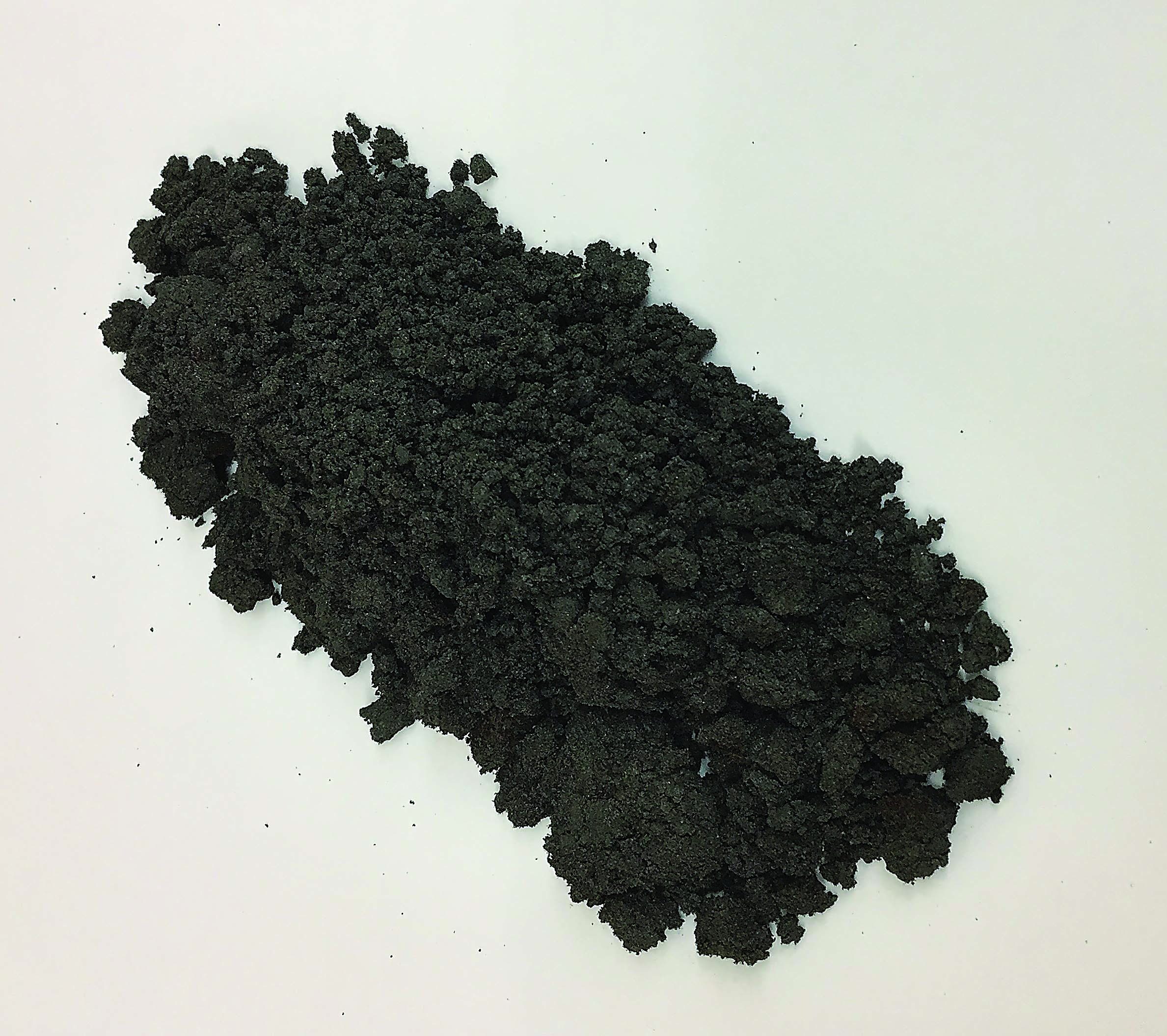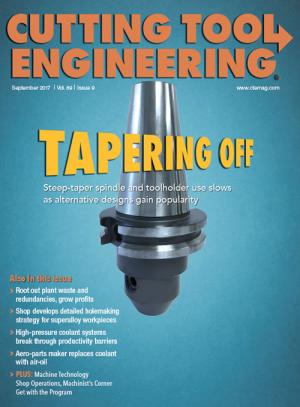Swarf, which is the result of particles being removed when grinding hard or difficult-to-machine materials, tells a story. Many different abrasive types and abrasive grain sizes are applied to grind these materials.
Parts manufacturers choose precision abrasive grinding when other machining methods are not able to obtain the specified size, tolerance or surface finish. An abrasive grit or mesh is selected to achieve the required result.
Conventional and ceramic abrasives are called grit particles, whereas superabrasives are referred to as mesh particles. Both types of particles are screened and sized to achieve the appropriate sieve sizes.

Grinding hardened steel with an SG wheel produced this swarf. Image courtesy of Diamond Industrial Tools.com.
To determine the best abrasive size, end users must know the capabilities of the machine to be used. Workpiece material hardness and tolerance, surface finish and productivity requirements also play a role in choosing the correct abrasive size and type when grinding.
Swarf can help when choosing the type of abrasive grain used. Cast-iron swarf is in a powder form, which may require grinding with a green silicon-carbide abrasive. In contrast, grinding ceramics, glass and other crystalline materials require a diamond wheel because they are hard materials. Their swarf is a powder—not a curled chip.
Swarf tells additional tales: what the speeds and feeds are and how stiff and strong the grinding machine is. The color of swarf tells how effectively the wheel and workpiece are interfacing.
In addition, the condition of the swarf indicates how well the filtration system is doing its job, and material hardness influences the lubricity of the coolant chosen. Materials harder than 50 HRC, for example, require a more lubricious coolant. A good choice would be a 7:1 water-soluble solution or straight oil.
Always use your five senses when reviewing swarf. Save a swarf sample to show others who can help determine a method to boost productivity.
Contact Details
Related Glossary Terms
- abrasive
abrasive
Substance used for grinding, honing, lapping, superfinishing and polishing. Examples include garnet, emery, corundum, silicon carbide, cubic boron nitride and diamond in various grit sizes.
- ceramics
ceramics
Cutting tool materials based on aluminum oxide and silicon nitride. Ceramic tools can withstand higher cutting speeds than cemented carbide tools when machining hardened steels, cast irons and high-temperature alloys.
- coolant
coolant
Fluid that reduces temperature buildup at the tool/workpiece interface during machining. Normally takes the form of a liquid such as soluble or chemical mixtures (semisynthetic, synthetic) but can be pressurized air or other gas. Because of water’s ability to absorb great quantities of heat, it is widely used as a coolant and vehicle for various cutting compounds, with the water-to-compound ratio varying with the machining task. See cutting fluid; semisynthetic cutting fluid; soluble-oil cutting fluid; synthetic cutting fluid.
- grinding
grinding
Machining operation in which material is removed from the workpiece by a powered abrasive wheel, stone, belt, paste, sheet, compound, slurry, etc. Takes various forms: surface grinding (creates flat and/or squared surfaces); cylindrical grinding (for external cylindrical and tapered shapes, fillets, undercuts, etc.); centerless grinding; chamfering; thread and form grinding; tool and cutter grinding; offhand grinding; lapping and polishing (grinding with extremely fine grits to create ultrasmooth surfaces); honing; and disc grinding.
- grinding machine
grinding machine
Powers a grinding wheel or other abrasive tool for the purpose of removing metal and finishing workpieces to close tolerances. Provides smooth, square, parallel and accurate workpiece surfaces. When ultrasmooth surfaces and finishes on the order of microns are required, lapping and honing machines (precision grinders that run abrasives with extremely fine, uniform grits) are used. In its “finishing” role, the grinder is perhaps the most widely used machine tool. Various styles are available: bench and pedestal grinders for sharpening lathe bits and drills; surface grinders for producing square, parallel, smooth and accurate parts; cylindrical and centerless grinders; center-hole grinders; form grinders; facemill and endmill grinders; gear-cutting grinders; jig grinders; abrasive belt (backstand, swing-frame, belt-roll) grinders; tool and cutter grinders for sharpening and resharpening cutting tools; carbide grinders; hand-held die grinders; and abrasive cutoff saws.
- hardness
hardness
Hardness is a measure of the resistance of a material to surface indentation or abrasion. There is no absolute scale for hardness. In order to express hardness quantitatively, each type of test has its own scale, which defines hardness. Indentation hardness obtained through static methods is measured by Brinell, Rockwell, Vickers and Knoop tests. Hardness without indentation is measured by a dynamic method, known as the Scleroscope test.
- lapping compound( powder)
lapping compound( powder)
Light, abrasive material used for finishing a surface.
- lubricity
lubricity
Measure of the relative efficiency with which a cutting fluid or lubricant reduces friction between surfaces.
- straight oil
straight oil
Cutting fluid that contains no water. Produced from mineral, vegetable, marine or petroleum oils, or combinations of these oils.
- swarf
swarf
Metal fines and grinding wheel particles generated during grinding.
- tolerance
tolerance
Minimum and maximum amount a workpiece dimension is allowed to vary from a set standard and still be acceptable.

